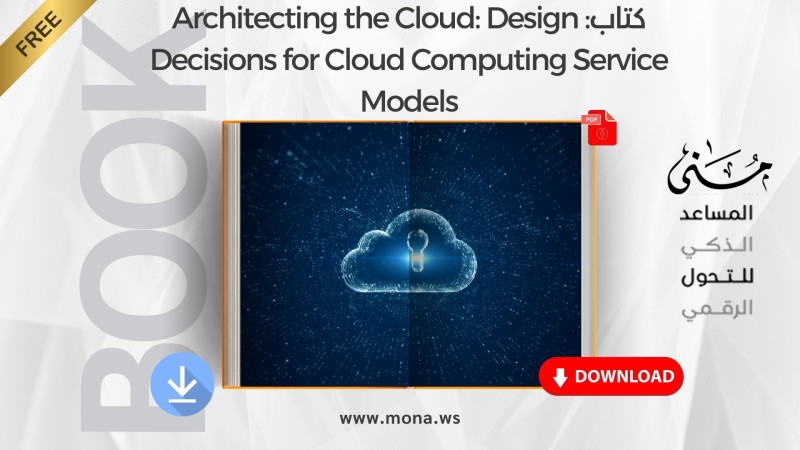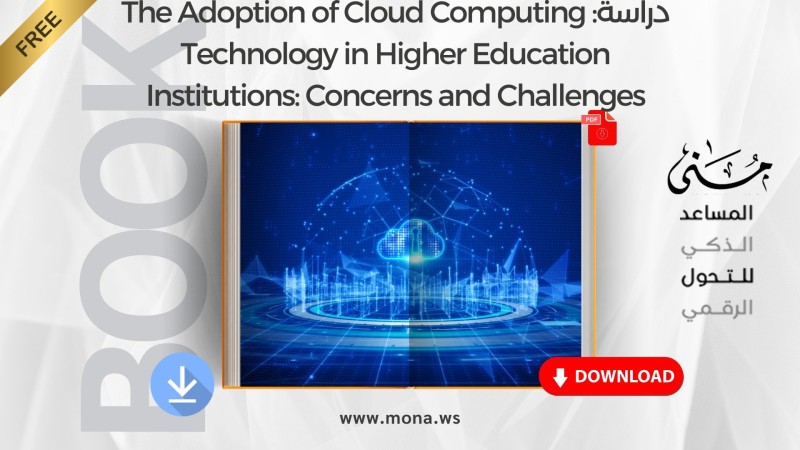Study: Towards Designing a Preliminary Model for Implementing Cloud Computing in Educational Institutions
Author: Prof. Dr. Muhammad Muhammad Al-Hadi
The book, "Towards Designing a Preliminary Model for Implementing Cloud Computing in Educational Institutions," is an important scientific and academic reference that addresses one of the most influential technological transformations in the education sector. It highlights the transition from traditional computing to a model for implementing cloud computing in educational institutions. The aim is to enhance the efficiency of educational and administrative processes, reduce costs, and achieve flexibility in a rapidly evolving environment that relies on the internet, smart infrastructure, and on-demand services.
In "Towards Designing a Preliminary Model for the Application of Cloud Computing in Educational Institutions," the author reviews the reality of Egyptian and Arab education in terms of the use of information technology. He highlights the economic challenges facing educational institutions, such as shrinking budgets and increasing demand for educational services. He proposes a preliminary model based on cloud computing to overcome these obstacles and provide a flexible and secure digital educational environment that is efficiently managed and services are delivered in a scalable and growth-oriented manner.
Cloud Computing Concepts in Education
The book "Towards Designing an Introductory Model for Implementing Cloud Computing in Educational Institutions" presents a precise concept of cloud computing as a model that enables on-demand access to diverse computing resources such as servers, applications, and storage via the internet, without the need for a large physical infrastructure. The book notes that cloud computing reduces reliance on local computers and facilitates access to information from anywhere, at any time.
The author discusses the key features of a model for designing a preliminary model for implementing cloud computing in educational institutions, such as self-service, resource flexibility, pay-as-you-go, network access, and location independence. He argues that these features make educational institutions more capable of facing challenges and updating their infrastructure in a gradual and systematic manner.
Through a comprehensive architectural analysis, the author demonstrates how computing has transitioned from mainframes to endpoints, then to distributed computing, and finally to cloud computing. This forms the theoretical framework upon which a model is built to design a preliminary model for implementing cloud computing in educational institutions.
Benefits and risks of cloud implementation
The next chapter of the book "Towards Designing an Introductory Model for Cloud Computing in Educational Institutions" focuses on a detailed analysis of the benefits and risks associated with implementing cloud computing in the education sector. The most prominent benefits presented include: access to resources from anywhere, reduced costs, improved collaboration between educational stakeholders, and the availability of free or chargeable services based on usage.
The book highlights that applying a preliminary model for cloud computing in educational institutions enables institutions to allocate resources, achieve gradual growth, and expand services quickly and flexibly, enhancing the effectiveness of the educational process. This model also enables education to transform from mere traditional content into a flexible, interactive digital system.
However, the author did not overlook risks and challenges, such as privacy issues, data security, compliance with standards, and low trust in cloud service providers. Therefore, the book "Towards Designing a Preliminary Model for Implementing Cloud Computing in Educational Institutions" proposes advanced technical solutions, such as encryption, centralized identity management, and firewalls, to ensure data confidentiality and protect it from breaches.
Cloud Models and Application Frameworks in Education
The book includes an analysis of the three types of cloud computing models: public cloud, private cloud, and hybrid cloud. It explains that choosing the optimal model should be linked to the needs of the educational institution and the degree of sensitivity of the data it handles. It indicates that the hybrid cloud offers a balance between performance and privacy, making it the ideal model for applying towards designing a preliminary model for implementing cloud computing in educational institutions.
The author also discusses the levels of cloud service delivery: Software as a Service (SaaS),SaaS, Platform as a Service (PaaS), and Infrastructure as a Service (IaaS), and demonstrates how each of these levels can contribute to the development of e-learning, monitoring performance, and improving the learning environment, which directly supports the objectives of the model towards designing a preliminary model for the application of cloud computing in educational institutions.
Stages of implementing the preliminary model
The book concludes with a detailed presentation of the five steps for implementing a preliminary model for implementing cloud computing in educational institutions:
Developing the knowledge base: Collecting information, studies, and global reports on cloud computing.
Evaluation of the current stage of the educational institutionStudy the organizational and technical structure, and user needs.
Trying the proposed solutions:Limited application of cloud solutions to verify their efficiency.
Choosing the right solutionAnalyze data and applications and determine what to upload to the cloud.
Implement and manage the chosen solutionA comprehensive and integrated implementation of cloud computing within the enterprise, with scalability and security in mind.
In these stages, the author focuses on the importance of aligning the cloud with internal policies, integrating with existing infrastructure, and making the best use of available resources.
Ultimately, the book, "Towards Designing an Introductory Model for Implementing Cloud Computing in Educational Institutions," presents a profound and realistic strategic vision for how educational institutions can transform from a traditional system to a digital environment based on cloud computing. The proposed model emerges as a comprehensive, practical solution that enhances educational efficiency, reduces costs, and propels institutions to new horizons of innovation.
The author shows that this model is not just a theoretical idea, but an urgent necessity for the future of modern education, in a world that relies on technology as a lever for knowledge and development.
You can download the study: Towards Designing a Preliminary Model for Implementing Cloud Computing in Educational Institutions directly from here.
 يمكنك تحميل دراسة: نحو تصميم نموذج تمهيدي لتطبيق الحوسبة السحابية في المؤسسات التعليمية مباشرةً من هنا.
يمكنك تحميل دراسة: نحو تصميم نموذج تمهيدي لتطبيق الحوسبة السحابية في المؤسسات التعليمية مباشرةً من هنا.










Comments
Add New Comment